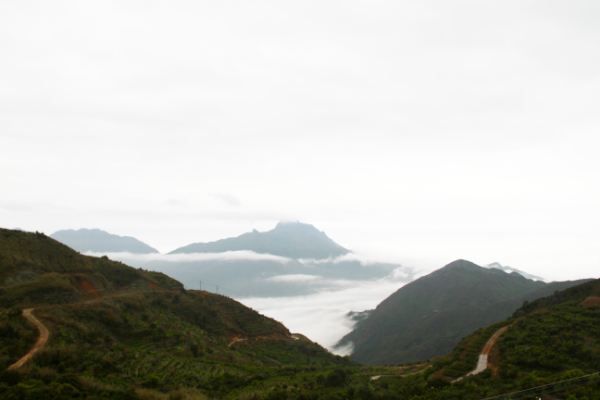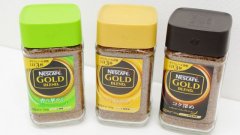Three sources of Oolong Tea where does Phoenix Dancong Tea come from as tribute tea?
Anxi Theory: Oolong Legend first of all, Anxi is based on the folktale of a tea farmer named Su long during the reign of Yongzheng in the Qing Dynasty. He is a tea farmer and hunting expert in Nanyan Village, Anxi County, Fujian Province. Because of his long outdoor activities every day, he is very strong and his skin is tanned. Therefore, the villagers call him "Oolong" (homonym with Oolong), which means "black dragon" in Chinese. One day in spring, Wulong went up the mountain with a tea basket to pick some tea and a shotgun, hoping to catch a wild animal to feed his family. At the end of the day, Wulong was carrying a basket of fresh tea. On his way back, he saw a mountain deer. Wulong shot the deer, but the deer escaped into the forest. After a long chase, he finally caught his prey. It was evening when he took it home. Wulong and his family are busy cooking and enjoying delicious food. As a result, the whole family completely forgot to process fresh tea until the next morning. The fresh tea leaves were left outside all night, and the edges of the leaves turned red. As a result, the tea began to oxidize. Because it gives off a certain fragrance. To his surprise, the taste was so delicious that it didn't have the usual astringency. After careful consideration, the tea farmers in the village fumbled out this new method of making tea. After a series of complex processing steps, including shrinkage, shaking, semi-fermentation and baking, they produced a high-quality new tea: oolong tea. Wuyi Theory-the theory of Wuyi in the History of Oolong is based on the detailed records of the book "Tea Theory" written by Wang Caocao, a scholar of the Qing Dynasty. Here is an English translation of oolong tea: "after the Wuyi tea is harvested, the wind blows the tea into the sun with a bamboo basket. This process is called 'drying'. When the green of the tea gradually fades, deep-fry it before baking. Yangxian tea is steamed, not fried, and then baked. Songluo tea (the famous tribute tea at that time) and Longjing are fried and not baked, so the color is pure. Only Wuyi tea is fried and baked. We saw them half red and half green. Green is fried and red is baked. After the tea is harvested, spread it out and shake it well. When the fragrance comes out gradually, it can be stir-fried. The timing of frying and baking is crucial. In the process of stir-frying, repeatedly pick out the old leaves and stems of the tea to unify the color of the tea. " In order to record the "story of tea", Mr. Cheng Qikun, former director of the China Tea Association, agreed that this article describes the production process of oolong tea. "the current Wuyi rock tea production method in Chongan County, Fujian Province, still retains the traditional oolong tea production method described in the Tea Story."

Tribute tea theory: Beiyuan tea the theory holds that the formation and development of oolong tea can be traced back to Beiyuan tea. Beiyuan tea is the earliest tribute tea in Fujian and the most famous tea after the Song Dynasty. In history, more than a dozen books have mentioned the production and preparation of Beiyuan tea. Beiyuan, an area near Fenghuang Mountain in Fujian Province, began to produce tea as early as the end of the Tang Dynasty. According to Fujian Tongzhi, Zhang Tinghui, the father of Beiyuan tea, led the people to open a tea garden in Fenghuang Mountain and produced the famous dragon and Phoenix cake tribute tea. Cai Wei, the official in charge of supervising and producing tribute tea at that time, was full of praise for Beiyuan tea. In a book called Tea Records, written in 1051, he wrote: "when it comes to the sweetness and smooth taste of tea, Fenghuangshan Beiyuan tea is the best." The most important product of Beiyuan tea is Longfeng tea cake. The cake-making process begins with a basket of fresh leaves, which are picked in the morning and left outside to wither. In the evening, shake the leaves in a basket and steam them. At this time, the fresh tea is in a semi-fermented state. " The above description of oolong tea really conforms to the definition of oolong tea. This is why many tea experts believe that Beiyuan tea is the predecessor of oolong tea.
Important Notice :
前街咖啡 FrontStreet Coffee has moved to new addredd:
FrontStreet Coffee Address: 315,Donghua East Road,GuangZhou
Tel:020 38364473
- Prev

Tokyo, Japan, the original Sakura Nest Coffee opens a coffee flavor experience shop! Can baristas wear perfume?
The aroma of coffee is strong and smells good. Code worker No. 6 is often attracted by the aroma of coffee from afar, often smelling it before seeing its store, and smelling the strong aroma of milk and coffee before it is close. Find the nearest coffee shop, open the door and feel the coffee wholeheartedly, and drink up the coffee, the aroma will not go away for a long time. As the leader of the coffee industry, Nestle Coffee
- Next

Differences in taste between Zhengshan race and Xihu Longjing tea and matters needing attention for preservation of black tea and green tea
Traditionally, black tea has been the most popular tea drink outside China. After the discovery of black tea, it was the first time that the Portuguese introduced black tea to Europe. Members of the royal family loved it and soon the public discovered it. In 1908, after Thomas ThomasSullivan invented the tea bag,
Related
- Being chased out of the rain in front of Starbucks?! Store: Sheltering from rain under umbrellas poses a safety hazard
- The white moonlight has changed?! Lucky launches "Big Winter Pear American"
- Hand-brewed coffee three-stage method, high-sweet and universal brewing method to share! What does the high sweet water level of hand-brewed coffee mean?
- What is the difference between raw, refined and full espresso coffee? How to extract espresso and taste good?
- A complete list of coffee bean names and their meanings! What is Yejia Shefi coffee? Where is Mantelin coffee?
- What grade does Arida Manor Kaduai coffee beans belong to? What treatment is Arida ASD slow anaerobic sun exposure?
- The milk tea cup becomes smaller?! Overlord Tea Girl launches a new "Return to Yunnan" series
- Accused of selling counterfeit and high-priced coffee beans! Well-known boutique coffee brand "Oukelao" bowed and apologized!
- How to make espresso dumplings? Can I eat coffee and glutinous rice balls together?
- Save the unformed and stagnant powder cakes in one second! What is the problem with stagnant water in the powder bowl of the espresso machine?

